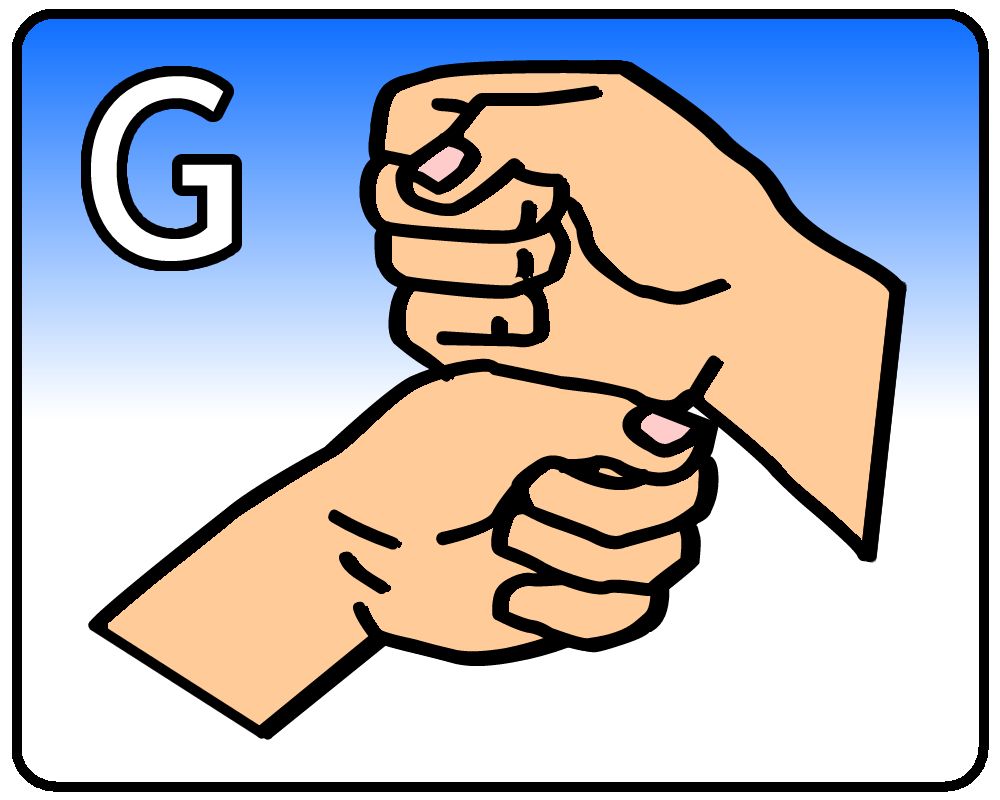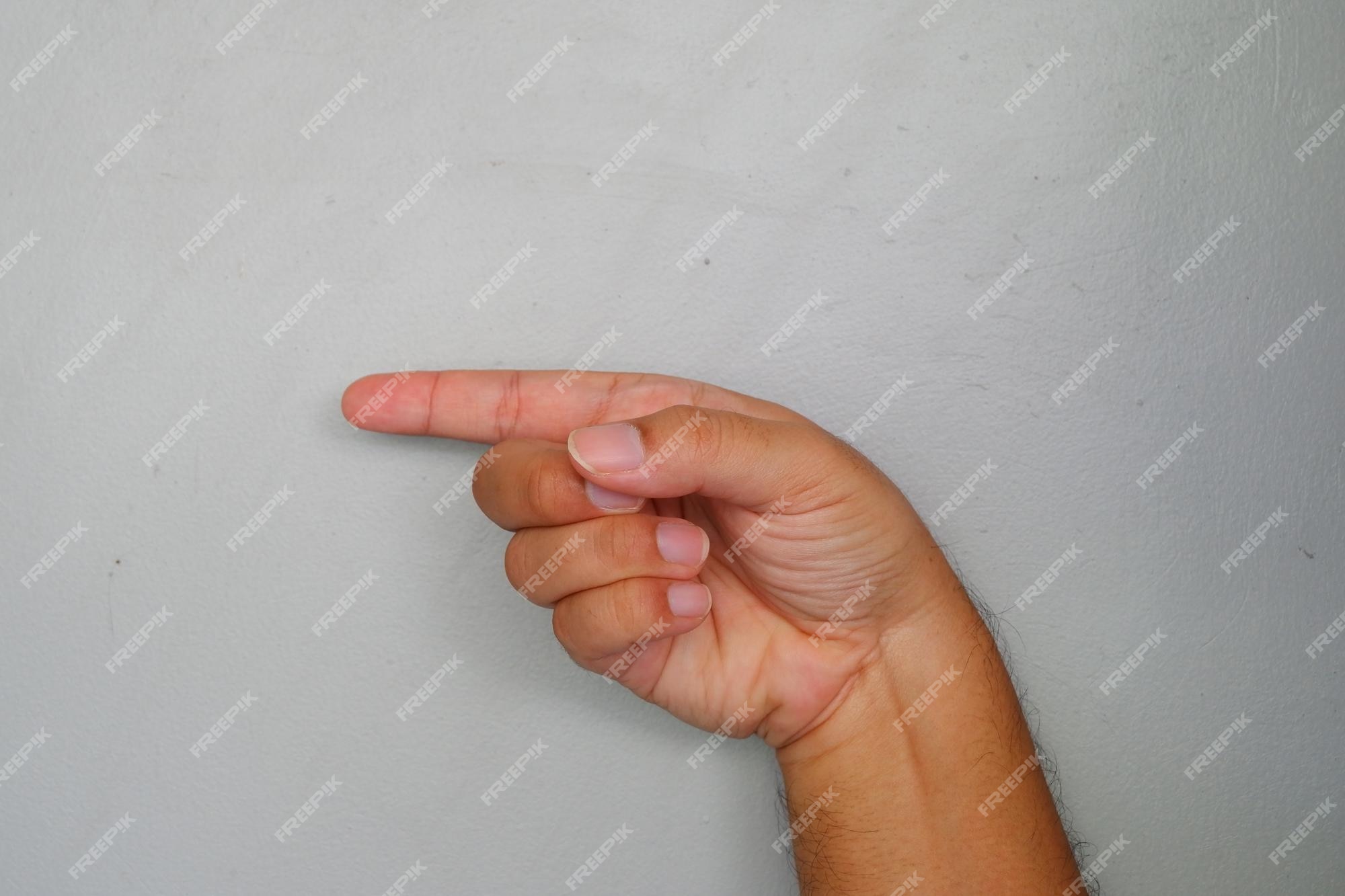ASL: How To Sign "G" - Your Beginner's Guide To Fluency
Can a single gesture truly unlock a world of communication? Absolutely the letter "G" in sign language is your gateway to a deeper understanding of the Deaf community and a more inclusive world.
Sign language, far from being a collection of random movements, is a vibrant and complex language, complete with its own grammar, syntax, and rich cultural heritage. Grasping the manual alphabet, and especially the letter "G", is an indispensable step in building a strong foundation in American Sign Language (ASL). This guide offers a comprehensive exploration of the "G" sign, covering its fundamental aspects and providing valuable tips for both beginners and seasoned learners.
Whether you're a student, a parent, or someone looking to connect more effectively with Deaf friends or colleagues, this article equips you with the essential tools and resources to master the "G" sign. Let's delve in!
- Amal Clooney In A Bikini Style Impact Beyond The Courtroom
- Mckinley Richardsons Height How Tall Is He More
The letter "G" in ASL, a foundational element, embodies simplicity yet is essential for effective communication. It serves as a building block for spelling and unlocks understanding of the cultural context of sign language. It's not merely about fingerspelling; it is a sign that opens channels of connection, enhances appreciation, and allows meaningful interactions.
Knowing how to sign "G" facilitates effective communication with Deaf individuals. It is a foundational skill that opens doors to more advanced sign language abilities. Whether you're spelling out names, places, or words, the "G" sign is an indispensable part of your linguistic tool kit. It's a key that unlocks the door to fluent interaction, helping you express thoughts, emotions, and ideas with greater clarity and precision.
| Subject | Details |
|---|---|
| Letter | G |
| Handshape | Extended index and middle fingers, other fingers curled into the palm, thumb resting against the side of the hand. |
| Purpose | Spelling words, names, places, and clarifying communication |
| Significance | Fundamental sign in the ASL alphabet, essential for beginners. |
| Link to Authentic Website | Handspeak.com |
The story of sign language is rich and fascinating, stretching back centuries. The foundations of contemporary sign language can be traced to the 18th century and the work of Abb Charles-Michel de l'pe, who created a system of communication for the Deaf in France. This system, in time, evolved into French Sign Language (LSF) and greatly impacted the development of ASL.
- Mom Facials Rejuvenate Relax Skincare For Busy Moms
- Twisted Vee The Ultimate Guide To This Chic Fashion Trend
The manual alphabet, including the "G" sign, hasn't remained static over time. Early variations were often formed around handshapes that resembled Roman letters. Today, ASL utilizes a standardized system, widely used in the United States and Canada. This evolution signifies the continuous refinement of sign language, adapting to the needs of its users and evolving into a readily accessible and efficient form of communication.
The "G" sign is a deceptively simple sign to master. To form it, the index and middle fingers extend, while the other fingers curl into the palm, and the thumb rests against the side of the hand. It's a sign that is easy to learn but crucial for effective communication. Its simplicity belies its profound impact on how the Deaf community communicates.
Heres a step-by-step breakdown of how to sign "G":
- Extend your index and middle fingers.
- Curl the remaining fingers into your palm.
- Place your thumb against the side of your hand.
- Hold the handshape steady for clarity.
While the standard "G" sign has widespread recognition, some subtle differences may exist depending on local dialects or individual preferences. Some signers might slightly change hand orientation or movement, but the basic handshape remains constant. Recognizing these subtle variations shows respect for the diversity within the signing community.
Regional variations exist. Signers in certain areas may rotate their wrists slightly when signing "G" to emphasize the letter. These differences, usually minor, have little effect on the sign's overall meaning. It's always beneficial to observe local signers to pick up on their specific style and improve the natural flow of communication.
One of the most common beginner mistakes with the "G" sign involves misaligned fingers, leading to confusion. Another is using excessive movement, which can make the sign appear unclear. Addressing these issues is crucial for clarity in communication.
Here's how to avoid common errors:
- Ensure your index and middle fingers are fully extended.
- Keep the other fingers tightly curled into your palm.
- Hold the handshape steady without unnecessary movement.
Mastering the "G" sign takes practice and patience. Consistent effort is key to building fluency and confidence. Embrace the learning process, and celebrate each milestone achieved.
Here are some strategies for honing your "G" sign skills:
- Practice the handshape in front of a mirror to ensure accuracy. This offers immediate visual feedback, correcting hand position and alignment
- Repeat the sign slowly at first, gradually increasing speed as comfort grows. This builds muscle memory and promotes fluid movement.
- Engage with Deaf signers to receive feedback and refine your technique. Their experience offers invaluable insight and guidance.
The "G" sign has many practical uses in daily communication. It can be used to spell names, places, and words that lack specific signs. This is essential for situations where standard signs are unavailable. Learning to fingerspell is a gateway to communicating a wide range of information.
In interactions with Deaf individuals, the "G" sign helps clarify words or phrases. When the sign for a specific word is unknown, you can spell it out using the alphabet, starting with "G." This ability supports clear communication, even in the absence of a shared vocabulary.
Numerous resources are available for those interested in learning sign language. Online tutorials, mobile apps, and community classes provide avenues to improve your skills. Explore diverse learning platforms to find what suits your style. Dedication and enthusiasm are keys to successful learning.
Here are some recommended resources to get you started:
- ASL University: A comprehensive online platform for learning ASL, featuring detailed lessons and practice exercises.
- SignSchool: An app offering interactive lessons for beginners, making learning accessible and fun.
- Local Deaf Community Events: Participate in local events to practice and immerse yourself in the Deaf community, improving your skills in authentic contexts.
The Deaf community is a dynamic group of people who rely on sign language for communication. Learning sign language, including the "G" sign, is a respectful and inclusive act, showing appreciation for their primary language. It's about acknowledging the value of a different communication style.
When interacting with Deaf individuals, approach them with respect and openness. Avoid assumptions about their abilities or preferences. Always inquire about their comfort level with sign language or alternative communication methods. This shows respect for individual choice and builds trust.
- Sandra Y Carlos Video How It Went Viral Impact On Culture
- Pinay Sez Scandal Unveiling Privacy Ethics In The Digital Age

Letter G

British Sign Language Dictionary g

Premium Photo Hand sign language for letter g